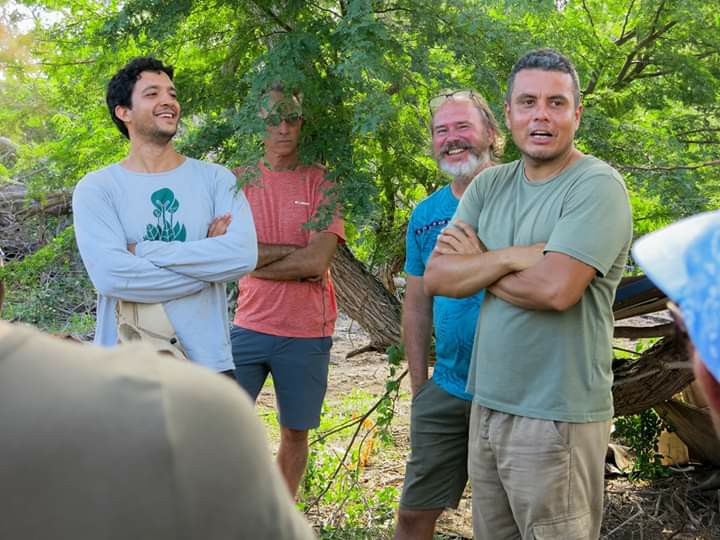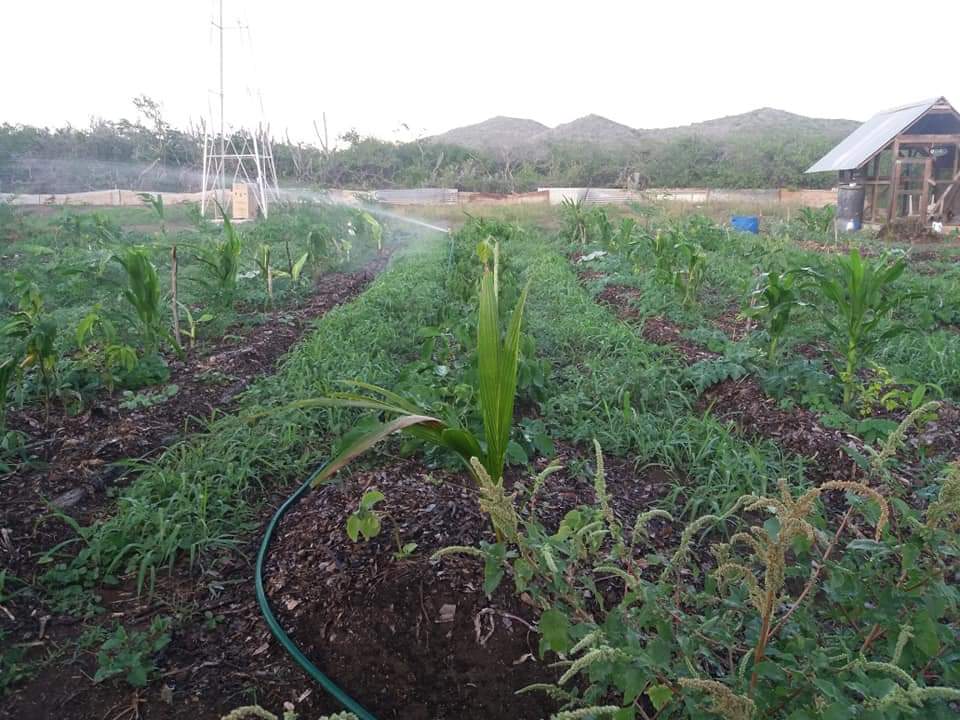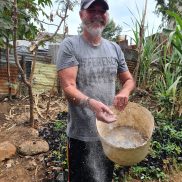The Impact of Syntropic Agroforestry on Water Usage and Farm Resilience
“Planting water”: How agroforestry helped crops become drought resilient – A real-life example
The personal testimony of Roland van Reenen, a Forest Farmer from Curaçao’
It was the year 2019, and I was organizing a 5 days intensive course on syntropic agroforestry on the Caribbean island of Curaçao for the Ministry of Health, Environment and Nature. I invited 2 excellent teachers with experience from similar projects in Brazil who were both direct students of the legendary Ernst Gotsch, founder of syntropic agroforestry.
I remember it like it was yesterday, how Thiago Gimenez Barbosa and Murilo de Lima were shocked to see the bad condition of our small island and the level of degradation of our agricultural soils. They spoke with full admiration about the local spiky acacia varieties and different cacti that were trying to regenerate the landscape. However, during the colonial period, they became dry due to a reckless cutting of the tropical rainforest that once must have covered the island. Until then, most people believed that the semi-arid climate zone (where we are located) with periods of about 7 months without any significant rainfall is the reason behind this failure, and there was no way to turn things around and make it work.
During the course, the experts challenged us with questions like why papayas don’t grow naturally on our island. Most of us blamed it on the lack of rainfall, but they explicitly told us that it had nothing to do with the rain but instead with the lack of sufficient organic matter in the soil.

The next discussion point was whether we would implement irrigation or not. They were against the idea of irrigation, but we, as practitioners and growers, stood our ground; Curaçao was not like Brazil, for in Curaçao, we needed to irrigate at least 4-liter water per m2 per day to grow anything.
The farm we implemented (used as a case study) during the course became a lush green agroforest, and after six months, the expert guests urged us to stop the irrigation. However, again, we were afraid to do so, and we tried to change their minds. To find a middle ground and calm our concerns, the experts asked us to stop irrigating for just 3 days as an experiment to see how it goes. With a heavy heart, we gave in, only to find out that the crops were thriving as if nothing had changed.
So, the next step was to stop irrigation for 5 days. When we noticed the resilience of the farm, we extended the period of no irrigation to 7, then 10, 14 days, and at the end, 20 days without a single drop of irrigation. We didn’t irrigate for 40 days at a certain moment, but then we had one rainfall in between.
So, in the end, we realized that our syntropic agroforestry farm needed only to be irrigated once every 3 weeks. This was a revolutionary change from our experience of irrigating 4 liters of water per square meter daily. Unfortunately, there was still some skepticism among the island farmers. However, this completely revolutionized my worldview, and it became my genesis in spreading this methodology across the globe.
In the next article, I will describe the dynamics of “planting water” in more detail.
Further studying
Verified Wikifarmer Expert in Sustainable Agriculture: Systems, Principles and Practices
Water Conservation Measures: The role of Mombasa grass in a Syntropic System










































































